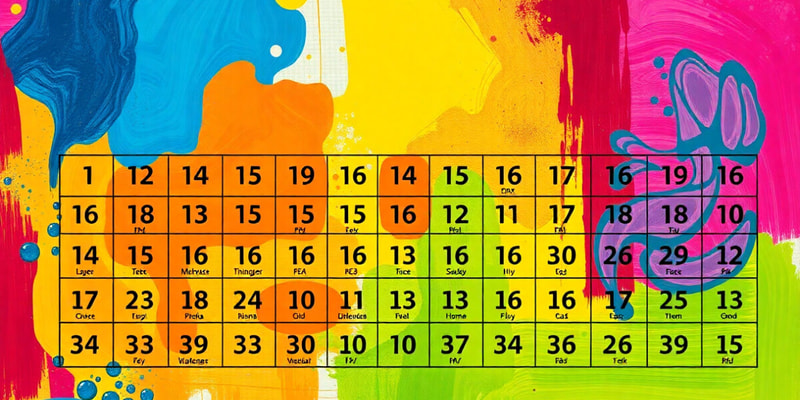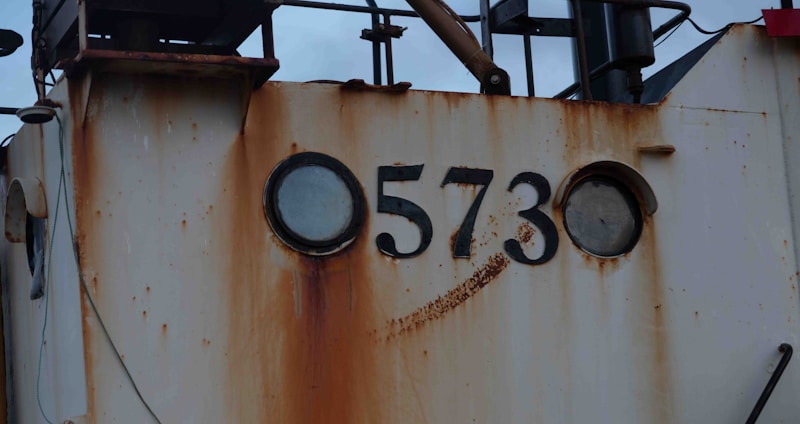Podcast
Questions and Answers
What is the oxidation number of sulfur in the compound H2SO4?
What is the oxidation number of sulfur in the compound H2SO4?
Which of the following statements correctly defines reduction in the context of redox reactions?
Which of the following statements correctly defines reduction in the context of redox reactions?
In the redox reaction MnO4– + H2C2O4 → Mn2+ + CO2, which species is reduced?
In the redox reaction MnO4– + H2C2O4 → Mn2+ + CO2, which species is reduced?
During a redox reaction, which agent is responsible for initiating oxidation?
During a redox reaction, which agent is responsible for initiating oxidation?
Signup and view all the answers
When balancing redox reactions in acidic solutions, how are oxygen atoms typically balanced?
When balancing redox reactions in acidic solutions, how are oxygen atoms typically balanced?
Signup and view all the answers
What is the oxidation state of oxygen in hydrogen peroxide (H2O2)?
What is the oxidation state of oxygen in hydrogen peroxide (H2O2)?
Signup and view all the answers
What is the correct half-reaction for the oxidation of oxalic acid (H2C2O4) in the given redox reaction?
What is the correct half-reaction for the oxidation of oxalic acid (H2C2O4) in the given redox reaction?
Signup and view all the answers
What does the term 'oxidising agent' imply in a redox reaction?
What does the term 'oxidising agent' imply in a redox reaction?
Signup and view all the answers
In the half-reaction MnO4– → Mn2+, how many electrons are transferred?
In the half-reaction MnO4– → Mn2+, how many electrons are transferred?
Signup and view all the answers
What is the oxidation state of chlorine in sodium hypochlorite (NaClO)?
What is the oxidation state of chlorine in sodium hypochlorite (NaClO)?
Signup and view all the answers
What is the purpose of adding hydroxide ions (OH–) to both sides of each half-reaction in redox reactions in basic solutions?
What is the purpose of adding hydroxide ions (OH–) to both sides of each half-reaction in redox reactions in basic solutions?
Signup and view all the answers
In the balanced reaction 4Zn + 7OH– + NO3– + 6H2O → 4Zn(OH)42– + NH3, how many moles of hydroxide ions are involved?
In the balanced reaction 4Zn + 7OH– + NO3– + 6H2O → 4Zn(OH)42– + NH3, how many moles of hydroxide ions are involved?
Signup and view all the answers
Why is it important to check the balanced reaction according to the number of atoms and charges on both sides?
Why is it important to check the balanced reaction according to the number of atoms and charges on both sides?
Signup and view all the answers
What does the element activity series indicate about zinc's ability to reduce cations?
What does the element activity series indicate about zinc's ability to reduce cations?
Signup and view all the answers
In the half-reaction 2MnO4– + H2O + Br– → 2MnO2 + 2OH– + BrO3–, what role does water play?
In the half-reaction 2MnO4– + H2O + Br– → 2MnO2 + 2OH– + BrO3–, what role does water play?
Signup and view all the answers
When balancing redox reactions, why might water be brought to one side of the equation?
When balancing redox reactions, why might water be brought to one side of the equation?
Signup and view all the answers
What is the final product formed when zinc reacts with nitrate ions in aqueous base?
What is the final product formed when zinc reacts with nitrate ions in aqueous base?
Signup and view all the answers
When adding two half-reactions together, what must be verified?
When adding two half-reactions together, what must be verified?
Signup and view all the answers
After balancing a redox reaction, which of the following must also be verified?
After balancing a redox reaction, which of the following must also be verified?
Signup and view all the answers
In the redox reaction involving potassium permanganate, what is the role of MnO4–?
In the redox reaction involving potassium permanganate, what is the role of MnO4–?
Signup and view all the answers
Study Notes
Oxidation Numbers
- The oxidation number of an atom is the effective charge of that atom in a molecule or ion.
- The oxidation number of an element in its elemental form is zero.
- The oxidation number of a monoatomic ion equals the charge of that ion.
- The sum of the oxidation numbers of all atoms in a species equals its total charge.
Rules for Assigning Oxidation Numbers
- For elements of Group I, the oxidation number is +1.
- For elements of Group II, the oxidation number is +2.
- For elements of Group III (except Boron), the oxidation number is +3 for M3+ and +1 for M+.
- For elements of Group IV (except Carbon and Silicon), the oxidation number is +4 for M4+ and +2 for M2+.
- For hydrogen, the oxidation number is +1 when combined with non-metals and -1 when combined with metals.
- For fluorine, the oxidation number is -1 in all its compounds.
- For oxygen, the oxidation number is -2 unless combined with fluorine, -1 in peroxides (O22-), -½ in superoxides (O2-), and -⅓ in ozonides (O3-).
Redox Reactions
- Oxidation is the loss of electrons and reduction is the gain of electrons.
- A redox reaction is a reaction in which oxidation and reduction take place simultaneously.
- An oxidizing agent removes electrons and becomes reduced in a reactions. The element in the oxidizing agent undergoes a decrease in oxidation number.
- A reducing agent supplies electrons and becomes oxidized in a reaction. The element in the reducing agent undergoes an increase in oxidation number.
Redox Reactions in Acidic Solution
- Redox reactions in acidic solution are balanced by the following steps:
- Identify the oxidized and reduced species from the changes in oxidation numbers.
- Write two skeletal equations for the half-reactions.
- Balance all elements in the half-reactions except oxygen, hydrogen, and the charge by inspection.
- Balance oxygen atoms in each half-reaction by adding water (H2O).
- Balance hydrogen atoms in each half-reaction by adding hydrogen ions (H+).
- Balance the electric charges in each half-reaction by adding electrons.
- Prepare the two half-reactions for summation by making the number of electrons in each the same.
- Combine the two half-reactions by adding them together (treating them as two simultaneous equations) and simplify the balanced equation.
- Check that the equation is balanced by the numbers of each atom and overall charge on each side of the equation.
Redox Reactions in Basic Solution
- Redox reactions in basic solution are balanced by the same steps as reactions in acidic solution, with the following additions:
- After balancing the hydrogen atoms in each half-reaction by adding H+, add the same number of hydroxide ions (OH-) to both sides of each half-reaction.
- Combine H+ and OH- in each half-reaction to form water (H2O).
- If water is present on both sides of each half-reaction, move the H2O to one side of each half-reaction.
- Continue with the balancing steps for acidic solution.
Element Activity Series
- The activity series is a list of elements arranged based on their ability to reduce cations.
- A metal can reduce the cations formed by any of the metals below in the list.
- For example, zinc (Zn) can reduce copper ions (Cu2+) but not vice versa.
Studying That Suits You
Use AI to generate personalized quizzes and flashcards to suit your learning preferences.
Related Documents
Description
Test your knowledge on oxidation numbers and their rules. This quiz covers the effective charge of atoms in molecules, the significance of oxidation states, and the specific rules for different groups in the periodic table. Perfect for chemistry students looking to reinforce their understanding of this topic.




